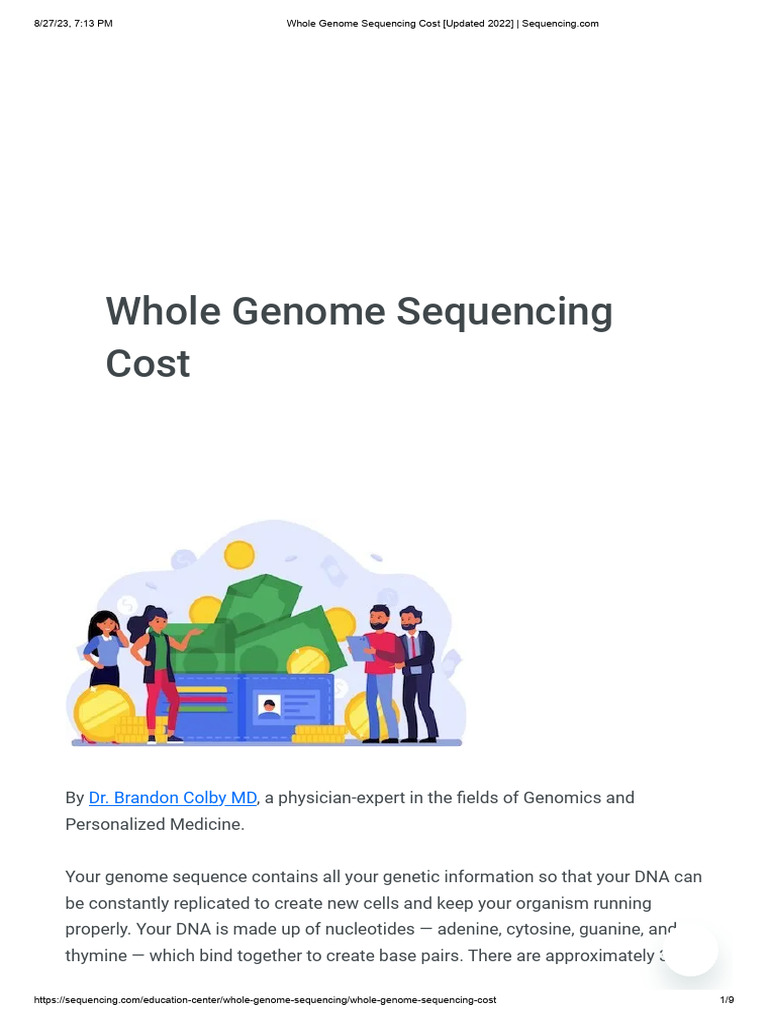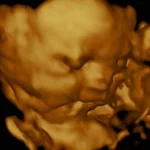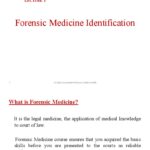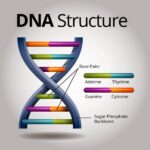Embarking on a whole genome sequencing (WGS) project? A pivotal initial query invariably arises: how much deoxyribonucleic acid (DNA) is actually required to successfully undertake this comprehensive analysis? The answer, while seemingly straightforward, is nuanced and contingent upon various experimental parameters. The required DNA quantity is not a one-size-fits-all proposition, and understanding the underlying factors is paramount for optimal outcomes. Let’s delve into the intricacies of DNA requirements for WGS, dissecting the influencing variables and providing a practical guide for researchers and clinicians alike.
I. The Fundamental Principle: Input DNA and Sequencing Library Construction
At its core, WGS involves fragmenting the entire genome into smaller, manageable pieces, preparing these fragments into a sequencing library, and then amplifying and sequencing these libraries. The starting DNA quantity directly influences the efficiency and quality of library construction. Insufficient input DNA can lead to biased amplification, skewing the representation of certain genomic regions and ultimately compromising the accuracy of the final sequence. Conversely, excessive DNA can overload the library preparation system, potentially leading to inefficient fragmentation or adapter ligation.
II. Quantifying the DNA Requirement: A Balancing Act
So, what’s the magic number? While specific recommendations vary depending on the sequencing platform and library preparation kit used, a general guideline is to aim for at least 1 microgram (µg) of high-quality genomic DNA. High-quality DNA is characterized by its integrity, absence of contaminants, and minimal degradation. This quantity provides a sufficient template for robust library construction, minimizing the risk of amplification bias and ensuring adequate coverage across the genome. However, advancements in sequencing technology and library preparation methods have significantly reduced the required input DNA in certain circumstances.
III. Low-Input WGS: Navigating the Nanogram Realm
For situations where only limited DNA is available – for example, in forensic analysis, ancient DNA studies, or clinical diagnostics involving small biopsies – low-input WGS protocols have emerged as a viable alternative. These specialized methods are designed to generate sequencing libraries from as little as 10-100 nanograms (ng) of DNA. Low-input protocols often employ techniques such as whole genome amplification (WGA) to increase the amount of DNA available for library construction. While WGA can be effective, it’s essential to be aware that it can also introduce biases and artifacts into the sequence data. Therefore, stringent quality control measures and appropriate bioinformatics analyses are crucial for interpreting the results of low-input WGS accurately.
IV. The Impact of DNA Quality: Integrity Matters
Beyond the sheer quantity of DNA, its quality is equally crucial. Degraded DNA, characterized by fragmented strands and chemical modifications, can significantly impede library construction and sequencing efficiency. Furthermore, contaminants such as proteins, RNA, and inhibitors of enzymatic reactions can interfere with the various steps involved in WGS. Assessing DNA quality is therefore a prerequisite. Techniques like agarose gel electrophoresis, spectrophotometry, and fluorometry are commonly used to evaluate DNA integrity, purity, and concentration. Samples exhibiting significant degradation or contamination may require purification or enzymatic repair before proceeding with library preparation.
V. Sequencing Platform Considerations: Tailoring the Approach
The choice of sequencing platform also influences the optimal DNA input. Different platforms have varying requirements in terms of library construction, cluster generation, and sequencing chemistry. For example, Illumina platforms, which are widely used for WGS, typically require libraries with specific adapter sequences and fragment sizes. Pacific Biosciences (PacBio) and Oxford Nanopore Technologies, which offer long-read sequencing capabilities, may have different library preparation protocols and DNA input recommendations. Consulting the manufacturer’s guidelines for the chosen sequencing platform is essential for optimizing DNA input and achieving high-quality sequencing results.
VI. Library Preparation Methodologies: A Spectrum of Options
The library preparation method employed also plays a critical role in determining the optimal DNA input. Several commercially available kits and in-house protocols cater to different DNA input ranges and sequencing platform requirements. These methods may differ in their fragmentation strategies (enzymatic vs. mechanical), adapter ligation protocols, and amplification schemes. Some library preparation kits are specifically designed for low-input samples, while others are optimized for high-throughput WGS. Selecting the appropriate library preparation method based on the DNA quantity, quality, and sequencing platform is crucial for maximizing sequencing efficiency and data quality.
VII. Amplification Bias: A Persistent Challenge
Polymerase chain reaction (PCR) amplification, a common step in library preparation, can introduce bias, preferentially amplifying certain DNA fragments over others. This bias can distort the representation of genomic regions in the final sequence data, leading to inaccurate variant calling and copy number estimation. To mitigate amplification bias, several strategies are employed, including using high-fidelity polymerases, optimizing PCR cycling conditions, and employing bias-reducing library preparation methods. Careful monitoring of amplification bias during library construction and bioinformatic correction during data analysis are essential for obtaining accurate and reliable WGS results.
VIII. Bioinformatics Analysis: Unraveling the Genomic Tapestry
The final step in WGS is the bioinformatics analysis, which involves aligning the sequenced reads to a reference genome, calling variants, and annotating the results. The quality and quantity of the sequencing data directly influence the accuracy and sensitivity of these analyses. Adequate sequencing depth, which refers to the average number of times each base in the genome is sequenced, is crucial for confident variant calling. Bioinformatic tools and algorithms can be used to assess sequencing quality, identify potential biases, and correct for artifacts introduced during library preparation and sequencing. A comprehensive bioinformatics pipeline, tailored to the specific WGS project, is essential for extracting meaningful biological insights from the data.
IX. A Shifting Paradigm: Towards Minimal Input and Enhanced Accuracy
The field of WGS is constantly evolving, with ongoing efforts to reduce the required DNA input, improve sequencing accuracy, and enhance bioinformatic analysis tools. Emerging technologies, such as microfluidic-based library preparation and single-molecule sequencing, hold promise for enabling WGS from even smaller amounts of DNA. As these advancements continue to refine the WGS workflow, the accessibility and applicability of this powerful genomic tool will undoubtedly expand, paving the way for new discoveries in basic research, clinical diagnostics, and personalized medicine. Therefore, understanding these fundamental principles is crucial for navigating the complexities of whole genome sequencing.










Leave a Comment